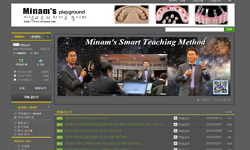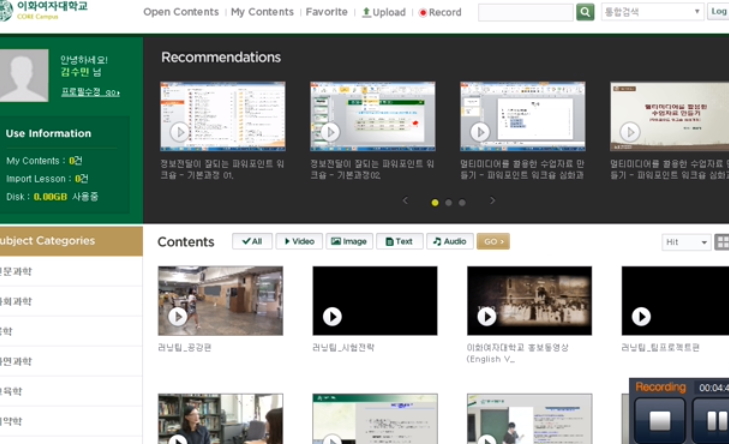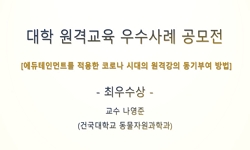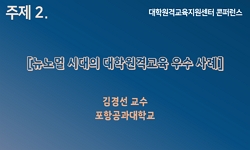한훤당 김굉필은 점필재 김종직으로부터 『소학』 공부의 중요성을 啓導 받고 소학동자로 자처하며 진지한 실천의 체험을 거쳐 높은 덕성을 성취하여 당대의 사우들과 후학들로부터 道學...
http://chineseinput.net/에서 pinyin(병음)방식으로 중국어를 변환할 수 있습니다.
변환된 중국어를 복사하여 사용하시면 됩니다.
- 中文 을 입력하시려면 zhongwen을 입력하시고 space를누르시면됩니다.
- 北京 을 입력하시려면 beijing을 입력하시고 space를 누르시면 됩니다.

기조논문 : 한훤당 김굉필 도학의 전승 양상 = A Study on the academic succession for the moral practice of Kim-Koengp`il(金宏弼)
한글로보기https://www.riss.kr/link?id=A99577248
- 저자
- 발행기관
- 학술지명
- 권호사항
-
발행연도
2012
-
작성언어
Korean
- 주제어
-
KDC
911.8
-
등재정보
KCI등재
-
자료형태
학술저널
-
수록면
7-34(28쪽)
- DOI식별코드
- 제공처
-
0
상세조회 -
0
다운로드
부가정보
국문 초록 (Abstract)
한훤당 김굉필은 점필재 김종직으로부터 『소학』 공부의 중요성을 啓導 받고 소학동자로 자처하며 진지한 실천의 체험을 거쳐 높은 덕성을 성취하여 당대의 사우들과 후학들로부터 道學의 모범으로 존중을 받았던 사람이다. 그는 연산조의 사화에 화를 당하였지만 중종조 이후 엄연히 조선 道學의 淵源正脈으로 존숭되었으므로, 그의 학문 사상과 언행과 처신과 사업은 그 당대의 사우와 문도는 물론 이후의 조선조 학술 문화와 지대한 영향을 끼쳤다. 한훤당이 남긴 문헌과 언행에 대한 주요한 진술과 관련 사적은 조선 道學淵源의 근거로서 선현들의 진중하게 여겨 대대로 수집 보완을 거쳐 『景賢錄』에 수록되어 있는데, 그 가운데 한훤당의 시문 저술은 그다지 많지 않다. 『景賢錄』에서는 한훤당의 도학 성취의 실상을 한훤당 자신의 시문보다는 당대 사우들의 증언과 傳聞을 중심으로 서술하고 있다. 도덕의 성취는 그 인물의 덕행과 사업에 感化를 받은 사람들의 증언과 전문을 통하여 그 실체에 접근할 수 있기 때문일 것이다. 이 글에서는 조선중기에 퇴계 이황 등이 한훤당의 시문과 사적을 수습하여 편찬한 『경현록』의 편찬 體3에 감발받아서, 한훤당에 대한 傳聞과 행적에 나타나는 整齊 靜坐의 수양법과, 小學-大學의 학문 규모, 그리고 家範과 講會의 의식 절차 등 세 가지 사례를 중심으로 한훤당의 도학과 그 학풍이 그 후학들에게 계승 파급되어 조선조의 학문과 사회 기풍의 형성에 끼친 경과를 대략 추정하여 보았다. 성리학의 이념과 『소학』 규범의 이해와 실천을 근간으로 하는 도학의 불씨는 포은 정몽주와 야은 길재와 점필재 김종직을 통하여 한훤당에게 전해졌다. 조선의 도학은 한훤당에 이르러 『소학』과 『대학』의 학문 규모를 정립하고, 성리학의 학문 신념에 입각한 철저한 자기 규율과, 인간관계의 미덕을 진지하게 실천함으로써 인격 감화를 통해 도덕 문명을 구현할 수 있다는 하나의 전범을 수립하게 되었다. 이러한 전범은 한훤당의 문도를 비롯한 수많은 학자들에게 파급되어 더욱 정밀하게 다듬어지고, 더욱 깊고 넓게 확산되었다. 그러므로 한훤당은 조선 도학의 수현으로서 존숭될 당위성이 있다고 할 것이다.
다국어 초록 (Multilingual Abstract)
Kim-Koengp`il(金宏弼) was one of the excellent Confucian scholar of the Joseon Dynasty. As a confucian scholar, his academic interest focused on the moral practice. His moral practice was respected by subsequent generations scholars. For this reaso...
Kim-Koengp`il(金宏弼) was one of the excellent Confucian scholar of the Joseon Dynasty. As a confucian scholar, his academic interest focused on the moral practice. His moral practice was respected by subsequent generations scholars. For this reason, he was enshrined at the shrine of Confucius. He was the most representative figure who was first enshrined at the shrine of Confucius in the early Joseon Dynasty. Nevertheless, he left very few writings. Therefore there was some difficult to identify his academic achievement and to prove his moral practice. For his acts, however, is said many anecdotes. From this perspective, in this paper, I noted his important academic impact into three. First, I focused on unique way to foster the spirit of Kim-Koengpil. His usual attitude to life was solemn and stately. His life he was constantly trying to maintain good habits. He taught it to his students that have to learn the habit of sitting correct posture in a quiet state[靜坐] He believed that it greatly help to improve to grasp the right mental attitude, to adhere to the principles of morals. These attitudes of day-to-day life was widely succeeded to the next generation Confucianists, and next generation of Confucianists embraced as it is one of the natural customs. Second, he specially emphasised on the two subjects in the traditional curriculum of Confucian, such as DAXUE[大學] and XIAOXUE[小學]. These two books, since Zushi`s[朱熹] detailed interpretation and through his editing and proofreading, was a part of the required reading for scholars. However, there were few scholars who regarded XIAOXUE as one of the basic study for Confucius Studies in the early Joseon Dynasty. Kim-Koengpil`S emphasis on the study of XIAOXUE, was handed down to his posterity scholars such as Lee-Hwang[李滉] and Cho-Sik[曺植]. ``Ten kinds of diagrams on the royal road to political[聖學十圖]`` written by Lee-Hwang and ``Notes on the many topics of study Confucius[學記類編]`` written by Cho-Sik, Include both diagrams for XIAOXUE and DAXUE[小學大學圖]. Third, he created a code of conduct for his family, said as Ka-Bum[家範]. It was not much that had been written for Family`s precept[家訓] in the early Joseon period. Then he inserted here in one special provisions. Monthly family gather in a certain place, and there they read and announce the regulations of Family`s precept[家 訓]. These sort of family periodic meetings is very similar to that proclaim the conventions of the countryside in Medieval Joseon society. These events was olso handed down to posterity, and remain in such form as the ceremony for the reading test[講會], that was performed in the village school of the late Joseon.
동일학술지(권/호) 다른 논문
-
- 경북대학교 영남문화연구원
- 이세동 ( Se Dong Lee )
- 2012
- KCI등재
-
한훤당(寒暄堂), 김굉필(金宏弼)에 대한 역사학계의 연구 성과와 전망
- 경북대학교 영남문화연구원
- 김훈식 ( Hun Sik Kim )
- 2012
- KCI등재
-
- 경북대학교 영남문화연구원
- 이상성 ( Sang Seong Lee )
- 2012
- KCI등재
-
- 경북대학교 영남문화연구원
- 박균섭 ( Kyoon Seop Park )
- 2012
- KCI등재




 KCI
KCI KISS
KISS






